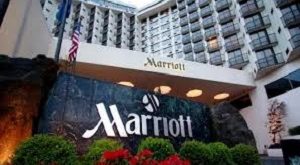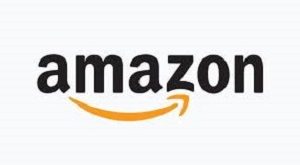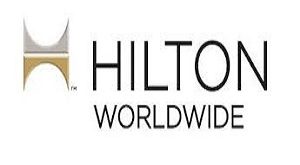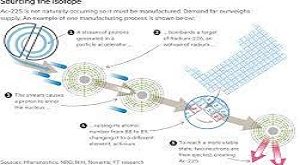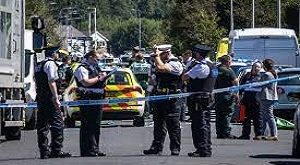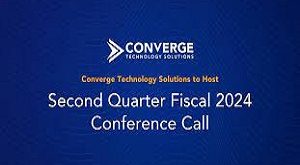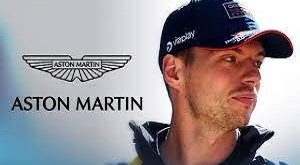in 1950, the Unified Vehicle Laborers marked a five-year contract with General Engines in which the association relinquishedits capacity to strike and surrendered any kind of methodical command over the organization. Daniel Bell wrote in Fortune that “GM may have paid a billion for peace, but it got a bargain,” which was dubbed the Treaty of Detroit.
College athletes are today’s autoworkers, and their industry is currently at a similar crossroads. The players can acknowledge a claim repayment that makes them truckload of cash however gives them zero power over the business; or they can compete for real influence over important college sports decisions like schedules, re-alignment of conferences, contracts, and health benefits.
Three antitrust cases—House v. NCAA, Hubbard v. NCAA, and Carter v. NCAA—were settled by the National Collegiate Athletics Association (NCAA) and the five largest college sports conferences with a group of former and current athletes at the end of May. In House, the most significant of the three cases, the offended parties contended that the NCAA’s guidelines which prohibited players from benefitting off their name, picture, and resemblance (NIL)were a conniving work to try not to pay players and an infringement of antitrust regulation. Among different imperatives, these standards restricted gatherings from imparting transmission income to players. In the event that the claims had gone to judgment and the offended parties won, previous competitors would be owed compensation and current competitors would have gotten a critical portion of the billions of dollars of TV income that school sports produces yearly.
In fact, the NCAA and the major conferences decided to settle because they were likely to lose in court and had to pay triple the antitrust law’s mandatory damages. The NCAA and the gatherings consented to pay $2.8 billion in back-pay harms to current and previous competitors and make an arrangement of income imparting to competitors, with the vast majority of the cash going to football players and people’s ball players. The agreement, which would be in effect for ten years, is the most important financial deal in college sports history and the final blow to amateurism in college sports.
A new system for college sports appears to be based on the House settlement. A one-time agreement with a group of former players, on the other hand, will not be a long-term solution that is stable. Lawful difficulties from current and future competitors who quit the arrangement will proceed with except if the players are really engaged with NCAA choices on a continuous premise. A permanent players’ organization is the only lasting solution for both the players and the NCAA.
In sports leagues, rules of the game—which are just a metaphor in other industries—can only be established through explicit agreement between competitors. Both the Ninth Circuit and the Supreme Court have made it clear that the players must give their consent for the NCAA to get back the power to set industry-wide rules it lost in Alston v. NCAA in 2021, which led to lawsuits over student athlete compensation. Equity Brett Kavanaugh, as he would like to think, announced that the best way to deescalate the contention — to bring down the temperature from the power of antitrust suit — was for the NCAA and the schools to take part in some type of aggregate haggling with competitors. The cases of Brown v. NFL and Wood v. NBA show that leagues can increase their ability to set internal standards by seriously bargaining with labor. The NCAA has been forced into a situation similar to that of these other leagues after a decade of legal battles.
In Alston v. NCAA, the Supreme Court unanimously found that colleges engaged in a collusive price-fixing scheme to reduce educational benefits like scholarships and room and board. players could get. The NCAA’s rules regarding educational benefits were only affected by the decision, not the rules against paying players directly. Despite this, the decision made it possible for athletes to profit from their name, image, and likeness (NIL), which has had a significant impact on college sports. Athletes now appear in advertisements and make sponsored posts on their social media accounts, and boosters now openly pay athletes and recruit them to schools. Players have become undeniably more remarkable and obviously better paid, however just through individual player-by-player gains. Their triumphs are fleeting and can vanish totally with a terrible season.
In the meantime, the NCAA as a whole has developed into a power struggle and lacks the ability to regulate college sports. There are essentially no principles with respect to Nothing bargains, supporter installments, or enlistment. After losing yet another lawsuit, the NCAA has stopped all enforcement of their remaining NIL regulations in recent weeks.
A power vacuum has been filled by old players, new groups, and remnants of the old regime since the NCAA’s demise as the dominant regulator of college sports. Meetings, schools, sponsors, and Nothing brands all rider for power in muddled and frequently open battles. The time is turbulent and debilitating for all interested parties, however it is difficult to get back to the beginner period. Everybody in school sports realizes that something new is expected to balance out the business.
The House settlement appears to be a welcome solution for the NCAA and its member schools in light of this fact. The settlement appears to placate all parties without removing players’ authority to set college sports rules and regulations. The district court judge who has heard each case will approve the settlement, which is negotiated with the attorneys who have filed every significant lawsuit against the NCAA, and will handsomely compensate a specific group of players. The NCAA is persuaded that cash is the main pressing concern in question: that by paying competitors, the antitrust and work issues tormenting school sports will turn out to be less significant. The NCAA hopes to regain regulatory authority through the settlement without giving up control over decisions that affect the entire industry. New NIL rules, modifications to the transfer portal, increased travel requirements, and nearly every other NCAA regulation would remain out of the players’ hands.
In particular for the NCAA, the House settlement apparently safeguards it from the antitrust suits that cut down the beginner framework and kept it from making any guidelines during the Nothing period. As has been the case in each and every private lawsuit against the NCAA, the settlement prevents any player from suing for antitrust harms. All things being equal, the players may just sue for antitrust damages as a class. Unless they opted out, future players would be absorbed into this class, which could cost them a spot on the roster. The settlement merely creates and centralized a legal class without establishing a players’ association, depriving athletes of their individual rights and generating collective power.
The absence of a players’ association also helps athletic departments that are poorly run. Athletic divisions are common cases of swollen and wasteful restraining infrastructures, and their dependence on competitors’ neglected work have made them messy arbitrators. In any other sport or industry, the excessive contracts that coaches are given free of charge and the excessive bureaucracy of athletic departments would be unacceptable. In order to negotiate with a powerful players’ union, these organizations would be poorly prepared.
However, a closer look at the agreement reveals that it will not result in a long-term solution for college sports after the amateur era. To start with, for school competitors, the proposed income share in the House settlement is definitely less rewarding than a potential aggregate dealing understanding could be. The compensation cap would be 22% of the typical Power 5 gathering school’s income from sports. Despite the fact that the amount will rise over the course of the ten-year agreement—double the length of MLB’s collective bargaining agreement—it will still be insignificant in comparison to the 50% of total revenue that NBA players receive and the 48% that NFL players receive.
In addition, it is highly unlikely that the settlement will protect the NCAA and the conferences from the same kind of antitrust lawsuit that brought down the amateur system and prevented the NCAA from enacting any regulations during the NIL era.
This is because the settlement does not interact with labor in the same way that professional league players’ associations do. Competitors will have no say over broad NCAA rules, for example, those about qualification and long haul medical care, or game explicit guidelines, similar to those in regards to plans and the postseason. The players, or an affiliation addressing them, were not effectively engaged with arranging the House settlement, dealing was restricted exclusively to wages, and there will be no long-lasting gathering addressing the players’ advantages to address future issues and complaints. Accordingly, this settlement probably doesn’t fulfill the guideline of Brown and Wood, since the NCAA can in any case singularly force terms onto players.
Additionally, the settlement does not shield the NCAA from claims that it misclassified athletes as school employees rather than “student-athletes.” Assuming that competitors win those claims, they will be qualified for worker benefits, including against segregation insurances and the option to coordinate. In point of fact, the settlement lends credence to the contention that athletes are in fact employees of their universities because they will now receive a salary directly from their schools, which will pay the athletes but will not assume the other responsibilities that are expected of an employer.
Indeed, even before the settlement, a Public Work Relations Board notice expressed that school competitors at non-public schools are representatives and reserve a privilege to unionize. A forthcoming NLRB case contends that meetings and schools are the competitor’s joint managers, an answer that would permit competitors at government funded schools to unionize too. With just the House settlement and no players affiliations, work claims and a sluggish movement of association decisions could keep, cracking any public agreement the NCAA desires to set. A unionized Huge Ten yet a non-association SEC would be a legitimate and enormous mess, overshadowing even the disarray of the Nothing period. Similar to antitrust law, labor law requires a long-lasting and powerful player collective to resolve the NCAA’s legal issues.
Several organizations have already begun organizing college athletes. Over 2,000 D1 athletes, including the entire rosters of various D1 football and basketball teams, are members of Athletes.org, the largest current players organization. The School Football Players Affiliation encouraged players to quit the unnegotiated $600 installment for computer game engineer EA Sports’ School Football 25 computer game. Furthermore, the Dartmouth men’s ball group has currently effectively won a conventional NLRB association political race as individuals from SEIU Neighborhood 560.
Who would be a part of a players association and what its structure would be are unknown. Some of the aforementioned organizations are restricted to a particular sport, conference, or even team. Athletes.org invites all D1, D2, and D3 school competitors as individuals no matter what their game; be that as it may, just a more modest subset would deal over compensation.
It is likewise muddled how a players affiliation would work when at least 25% of its enrollment leaves consistently and the greatest residency for a part is five years. Be that as it may, associations exist in different ventures with quick turnover: bistro representatives, graduate understudies at similar colleges as school competitors, and expert competitors in players affiliations whose typical vocation length is under five years. Clubs and sororities, while not associations, additionally offer one more illustration of school foundations that flourish in spite of the turnover of their individuals.
Additionally, clear succession plans and procedures for introducing newer athletes to the team’s values are already built into college sports teams’ culture-maintaining strategies. This model could be adjusted to the public, association level similarly for all intents and purposes for proficient players affiliations. Any school sports players affiliation would likewise possible be staffed by previous average pioneers, keeping up with progression and getting institutional information.
Even though the specifics are still unknown, it is clear that players will only be able to exert any real influence over college sports through collective action. Competitors offer the benefit for their schools, and they should be associated with settling on choices that influence their games: decisions regarding healthcare, transfer regulations, salaries, and the millions of other details that make up the college sports system.
In the post-amateur era of college sports, it is also evident that the NCAA and conferences can only reestablish stability by collaborating with a players’ association. In its broadest sense, antitrust law regulates the permissible market structures, favoring combinations that include labor in decision-making processes. Athletes will only be given a role in determining the structure of college sports if industry-wide agreements necessary to set league-wide rules are permitted. In the case of the NCAA, the antitrust harms are against labor. The novice period and its outright command over players was both legitimately and ethically unsuitable, yet the Nothing’s unregulated, entirely aggressive market has simply prompted turmoil. Stabilizing the system necessitates a regulated, centralized market with a significant, ongoing role for a players’ association. The NCAA’s off track trust that a claim settlement can for all time tackle the business’ concerns will just delay the mayhem and vulnerability in school sports.
The NCAA, schools, advertisers, television broadcasters, and conferences all make a lot of money off of college athletes. These organizations need to reach industry-wide agreements in order to keep making money. These agreements are only valid if all organizations, including labor, agree to them. The leverage athletes have in negotiations ought to be made abundantly clear by the NCAA’s and conferences’ acceptance of the House case’s terms. The NCAA is paying for peace, just like GM and the UAW. The players must now ensure that the NCAA does not receive a deal.
Creator Revelation: Jake Goidell previously worked as a researcher for the Professional Tennis Players Association (PTPA). The PTPA has offered no remark on the subject of NCAA player arranging, and the creator has no ongoing association with the association.
Articles address the assessments of their authors, not really those of the College of Chicago, the Stall Institute of Business, or its personnel.
